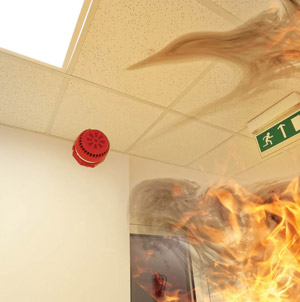Understanding smoke behaviour and how to control smoke is an area of specialist knowledge which straddles both active and passive fire safety. Active fire suppression is not always appropriate for all high risk areas. Passive fire protection is vital for containing fire spread but doesn’t necessarily prevent the smoke from escaping into adjacent rooms or corridors. The control and management of the smoke is vital because its debilitating, toxic nature is well-documented and in a fire incident there can be no guarantees that there will be no breaches of compartmentation!
Fire safety measures can provide an engineered solution for the management of the identified risks, yet the levels of understanding of smoke control is something of a grey area where very few specialists in this most important of fields exist. Pursuing solutions for protecting high risk areas without an understanding of how smoke will behave in a fire incident could be overlooked leading to the possibility of smoke logging, potentially compromising the means of escape. A smoke control system, in conjunction with both active and passive fire safety measures, can often provide a practical solution for managing the smoke risks. Compliant measures can be installed with minimal structural alterations to the fabric of the premises.
A well-designed smoke exhaust system involves a complex mathematical and scientific calculation. A series of vents and dampers, controlled in unison, deliver a balanced flow of negative and positive air pressures to ensure a controlled air flow, thereby attaining optimum smoke extraction. Controlling the extraction of the smoke from the compartments will inhibit the pressurised lateral spread of smoke and heat, not only assuring the calm evacuation of the building but also assisting the emergency services in their operational duties.
Fire safety has never been as important within the Built Environment as it is currently, the period ‘post-Grenfell.’ Grenfell Tower was a major disaster; however the majority of fatalities in fire incidents are in low rise, often single storey premises, where the toxic smoke quickly contaminates the limited space available. All smoke control systems should be integral to the building’s fire alarm control panel, activated by the fire and smoke detectors with a link to the Building Management System. This will provide important information about the incident for the emergency services on arrival.
Every building, regardless of its use, size, contents or occupants, has rooms containing higher fire risks than other rooms. Fire Risk Assessments can identify these higher risk areas, but proposing practical solutions for the protection of these compartments can be, and is often, problematic. Contact the author to find out more about how smoke control systems are solving long-standing fire risk issues of high dependency units in the NHS.
T +44 (0)1580 200198
info@ashfire.co.uk
www.ashfire.co.uk

